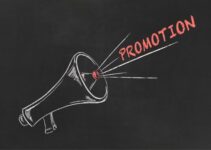Segmenting Consumer Markets
Markets can be segmented in many ways. Segmentation variables are the criteria that are used for dividing a market into segments. The chosen criteria should be good predictors of differences in buyer behavior. There are three broad groups of consumer segmentation criteria: Behavioral, Psychographic and Profile variables.
Behavioral variables such as benefits sought from the product, and buying patterns such as frequency and volume of purchase may be considered the fundamental basis.
Psychographic variables are used when purchasing behavior correlates with the personality or lifestyle of consumers. Consumers with different personalities or lifestyles have varying product preferences and may respond differently to marketing mix offerings.
Profiling is not essentially a criteria for segmentation. After finding these differences, marketers need to describe the people who exhibit them. Profile variables such as socio-economic group or geographic locations are valuable in describing the customers of the identified segment. For instance, a marketer may want to find out whether there are groups of people who value low calories in soft drinks. After tracing such people the marketer attempts to profile them in terms of their age, socio-economic groupings. The objective of profiling is to identify and locate the customers so that they can be approached by marketers.
But in practice segmentation may not follow this logical sequence. Often profile variables will be identified first and then the segments so described will be examined to see if they show different behavioral responses. For instance, different age or income groups may be examined to see if they show different attitudes and requirements.
Behavioral Segmentation
Benefits sought
People may seek different benefits from a product. Benefits sought in the fruit drink market are extra energy, vitamins, being natural, low calories, low price. There are brands targeting each segment. Benefit segmentation provides an understanding on why people buy in a market and aids in identification of opportunities, as some of the benefits that customers seek may not be provided by the existing companies.
Benefit segmentation is fundamental because the objective of marketing is to provide customers with benefits which they value. Profile analysis can then be performed to identify types of people (age, gender) in each benefit segment so that targeting becomes easier.
This is the most fundamental form of segmentation in marketing, which is used by almost every company in practice. For example, toothpaste brands are sold on the basis of the benefits offered by them such as whitening of teeth, prevention of cavities or fresh breath. Similarly, cosmetics are sold on the basis of benefits provided such as wrinkle reduction, prevention of aging, etc.
Purchase Occasion
Products like tires may be purchased as a result of an emergency or as a routine unpressurized buy. Price sensitivity is likely to be lower when products are bought in emergency situations.
Some products may be bought as gifts or self purchases. Gift markets are concentrated during a festival period, while the advertising budget for these will be concentrated in the pre-festival period. Package designs may differ during this period, and special offers may also be made.
Apparel brands are segmented on the basis of the occasion of usage. There are different collections for weddings, formal occasions, parties and for regular wear.
Purchase Behavior
Differences in purchase behavior can be based on the time of purchase relative to the launch of the product or on patterns of purchase. When a new product is launched, a key task is to identify the innovator segment of the market. These people allow communication to be specifically targeted at them. Innovators are more likely to be willing to buy products soon after the launch. Other segments of the market may need more time to assess the benefits and delay purchase until after the innovators have taken the early risks of purchase.
New products launched by companies are generally aimed at the most enthusiastic customers. For instance, the new age smart phones are targeted at tech savvy, upper class, busy executives.
Brand Loyalty
The degree of brand loyalty can be the basis for segmenting customers. Some buyers are totally brand loyal, buying only one brand in a product group. Most buyers switch brands. Some may buy one particular brand on most occasions but also buy two or three other brands. Others might show no loyalty to any individual brand but switch brands on the basis of special offers to buy, because they are variety seekers who look to buy a different brand each time.
By profiling the characteristics of each group a company can target each segment accordingly. By knowing the type of person (for instance, by age, socio-economic group) who is brand loyal, a company can channel persuasive appeals to defend this segment. By knowing the characteristics and shopping habits of offer seekers, sales promotions can be correctly targeted. In consumer durables market, customers can be divided into first time buyers, replacement buyers and switchers from other brands.
Retail stores would be the best example of loyalty based segmentation. Several retail stores have initiated the concept of loyalty cards. These cards give additional discounts and offers to regular customers. Airlines also indulge in loyalty based segmentation, wherein frequent flyer miles and other such offers are given to loyal customers.
Usage
Consumers can be segmented on the basis of heavy users, light users and non-users of a product category. Profiling of heavy users allows this group to receive most marketing attention because creating brand loyalty among these people will pay heavy dividends. Attacking the heavy user segment (20% customers consuming 80% of the product) can have drawbacks if all competitors are following this strategy. Analyzing the light and non-user category provides insights that permit development of appeals that are not mimicked by competition as they will concentrate on the heavy users.
For instance, not all loyal customers ore heavy users of a product. Not all customers who are loyal to a particular retail store would spend as much money. So a store can segment customers on the basis of loyalty and spend, instead of loyalty alone. Nokia has also segmented its market on the basis of usage of a mobile by a customer. For instance, its E-series is for the busy business executive who always wants to stay connected and updated, while the N-series is for the heavy music listener and tech geek.
Perception and Beliefs
Perceptions and beliefs are strongly linked to behavior. Consumers are grouped by identifying these people who view the products in a market in a similar way (perceptual segmentation) and have similar beliefs (belief segmentation). For instance, when it was launched, a product such as iPOD by Apple made more sense to consumers who were passionate about music and also held extremely positive perceptions about the use of technology.
In the early 1990s, several Indian consumers held negative perceptions about microwaves. It was believed that Indian food rich in oil and spices could not be cooked in microwaves, and the waves emanating inside were harmful to health. Another segment that was more open to adapting microwaves consisted of those consumers who were well aware about the functioning of the microwave, and were health conscious. They also sought the convenience of cooking faster, and cooking other types of cuisines. For these purposes, a microwave was found to be suitable by them. Therefore, marketers initially focused on the second segment.
Psychographic Segmentation
Lifestyle
A company groups people according to their way of living as reflected in their activities, interests and opinions. The company identifies groups of people with similar patterns of living. The question that arises in this type of segmentation is whether general lifestyle patterns are predictive of purchasing behavior in specific markets. The company will relate a brand to a particular lifestyle.
Several ready-to-cook and fast food brands treat dual income families as their primary target group, based on their busy lifestyle, and the fact that the lady of the house does not have the time to cook food. Even appliance and consumer durable brands treat this target segment as an important one, as this group’s disposable income is high.
Personality
In some product categories, there is relationship between brand personality and the personality of the buyer. Buyer and brand personalities are likely to match where brand choice is a direct manifestation of personal values, but for most FMCG goods, people buy a repertoire of goods. Personality and lifestyle segmentation will work best when brand choice is a reflection of self expression, i.e., the brand becomes a badge which makes public an aspect of personality. Successful personality based segmentation is found in categories such as cosmetics, alcoholic drinks and cigarettes.
Automobile brands segment their markers on the basis of the income of the customer and his personality. Research reveals that customers consider the car to be an extension of their individual personalities. Therefore, automobile brands use the car to convey the desired personality of the individual such as adventurous, caring, and tough.
Profile Segmentation
Even if behavior and/or psychographic segmentation has distinguished between buyer preferences, there is need to analyze the resulting segments in terms of profile variables such as age and socio-economic groups. The segments emerging from behavioral and psychographic segmentation will have to be profiled in terms of age, occupation, socio-economic status, place of residence, gender etc. Profiling will help companies in identifying the segments and focusing their attention on them.
Demographic Variables
Age – Age is used to segment many consumer markets, like food and clothing.
Gender – Differing tastes and customs between men and women are reflected in specialist products aimed at these market segments.
Lifecycle – Disposable income and purchase requirement vary according to lifecycle stage (young singles versus married). Young couples without children may be a prime target for consumer durables. The use of lifecycle analysis gives a better precision in segmenting markets than age because family responsibilities and presence of children have a greater bearing on what people buy than age.
Socio-Economic Variables
Social class as a predictor of buyer behavior has been open to question. Many people who hold similar occupations have dissimilar lifestyles and purchasing patterns.
Educational qualification and income are also used as variables for segmentation.
Geographic Variables
A marketer can use pure geographic segmentation or a hybrid of geographic and demographic variables to segment the market.
Geographic segmentation is useful when there are geographic locational differences in consumption patterns and preferences. Variations in food preferences may form the basis of geographic segmentation.
Both the geographic and demographic variables help a marketer to point to their segments more precisely.



